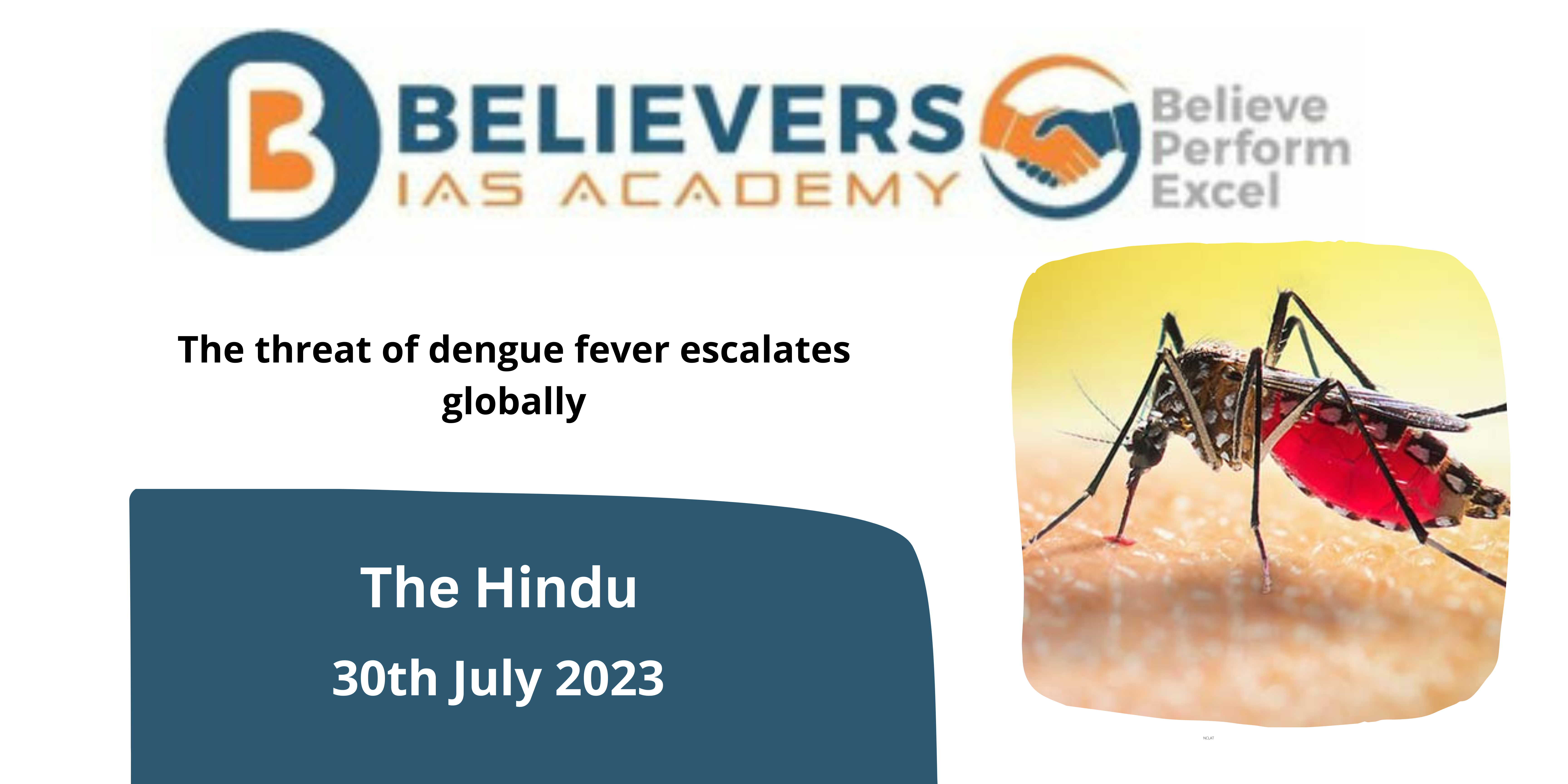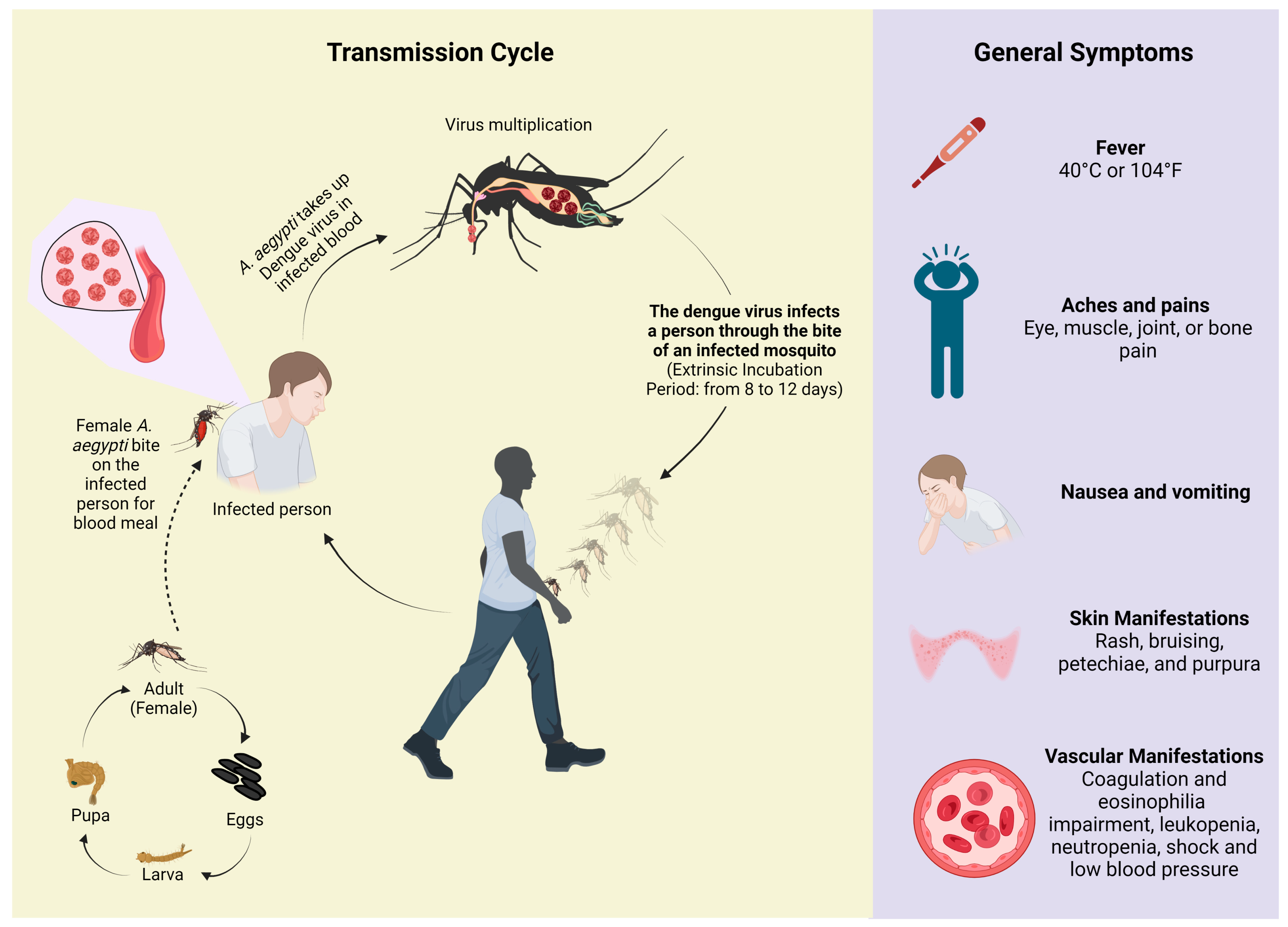The Threat Of Dengue Fever Escalates Globally
Context
The worrisome recent increase in dengue incidence around the world, notably in new places, presents serious public health issues. The WHO predicts that this year may see a record number of cases as a result of climate change favouring disease-carrying mosquitoes.
What is dengue?
Dengue fever is a viral disease that is mostly spread through mosquitoes, especially Aedes Aegypti species It is a serious issue for public health in many tropical and subtropical parts of the world. DEN-1, DEN-2, DEN-3, and DEN-4 are the four different serotypes of the dengue virus, which is a member of the Flaviviridae family.
How is it getting transmitted?
Dengue is spread to people via the bites of infected female mosquitoes, most frequently Aedes aegypti mosquitoes. When these mosquitoes feed on the blood of a person who has the dengue virus, they become infected. The mosquito can then spread the illness to everyone it bites after becoming infected.
What are the symptoms of Dengue?
Mild to severe dengue fever symptoms often show up 4 to 10 days after being bitten by an infected mosquito. Typical signs include:
- extreme fever
- terrible headache
- back of the eyes hurt
- Muscle and joint pain
- nausea and diarrhoea
- Skin rash that might itch
- mild bleeding, such as bleeding from the gums or nose
How can we prevent dengue?
Dengue does not have a specific therapy, so prevention is essential. Prevention strategies for dengue include:
- Eliminate stagnant water from buckets, tires, and flower pots to reduce mosquito breeding places. Mosquitoes can lay their eggs in these areas.
- Apply insect repellent with DEET, picaridin, or other appropriate ingredients to exposed skin and clothing to prevent mosquito bites.
- Wearing protective clothing will help you avoid mosquito bites, especially at dawn and dusk when mosquito activity is at its highest.
- Use mosquito netting while sleeping, and keep screens on your doors and windows to keep mosquitoes out of your living spaces.
- Community initiatives: Public health measures, such as community awareness campaigns and mosquito control programs, can help lower the mosquito population and the risk of dengue transmission.
- Takeda’s Dengue Vaccine: Takeda recently unveiled the first dengue vaccine, which has been authorized in various nations. While it has a limited ability to prevent serious illness, there is still room for development in the areas of infection prevention, uniform protection against all serotypes, and long-lasting immunity.
How is India getting affected by Dengue?
- High Burden: The number of dengue cases in India has been among the highest in the world. Numerous states and towns report thousands of incidents each year.
- Endemic Areas: Dengue is common in both urban and rural parts of India, where it is endemic. States like Kerala, Tamil Nadu, Karnataka, Maharashtra, Delhi, and West Bengal that have dense populations and tropical climates are more likely to experience dengue outbreaks.
- Seasonal Pattern: Because of the accumulation of standing water during the monsoon season, the incidence of dengue tends to grow during and after such times. In most of India, the monsoon season normally lasts from June through September.
- To reduce mosquito breeding places, mosquito control strategies like fogging, larvicide administration, and source reduction are used in India to combat dengue. To spread awareness of preventive measures, health officials also prioritize early detection, case management, and public education.
How is Dengue Affecting Globally?
- Alarming Global Increase: The recent global increase in dengue incidence is concerning, affecting millions of individuals each year all over the world. The WHO predicts that there could be a record number of cases as a result of global warming, which benefits mosquitoes that spread disease.
- Outbreaks in America: America has had large dengue epidemics since the beginning of 2023, with more than two million cases being documented as of July. The countries with the largest number of cases this year are Bolivia, Brazil, and Peru.
- Southern Cone Most affected: The bulk of dengue cases in the Americas have been documented in the Southern Cone, which includes Argentina, Brazil, Chile, Uruguay, and Paraguay. All four DENV serotypes are said to be co-circulating in a number of the region’s countries, which presents difficulties for public health agencies.
- The Changing Climate in Europe: The changing climate in Europe has resulted in more frequent heat waves, flooding, and long, hot summers, which have favoured dengue-carrying mosquito species. The region is experiencing a rise in DENV infections, according to the European Centre for Disease Prevention and Control (ECDC).
- Outbreaks in the Middle East: Dengue outbreaks have been reported in the Middle East, with the Qena governorate of Egypt reporting one and Sudan reporting its first dengue case ever in February. Due to poor climatic conditions, the disease is not regarded as endemic in the Middle East.





